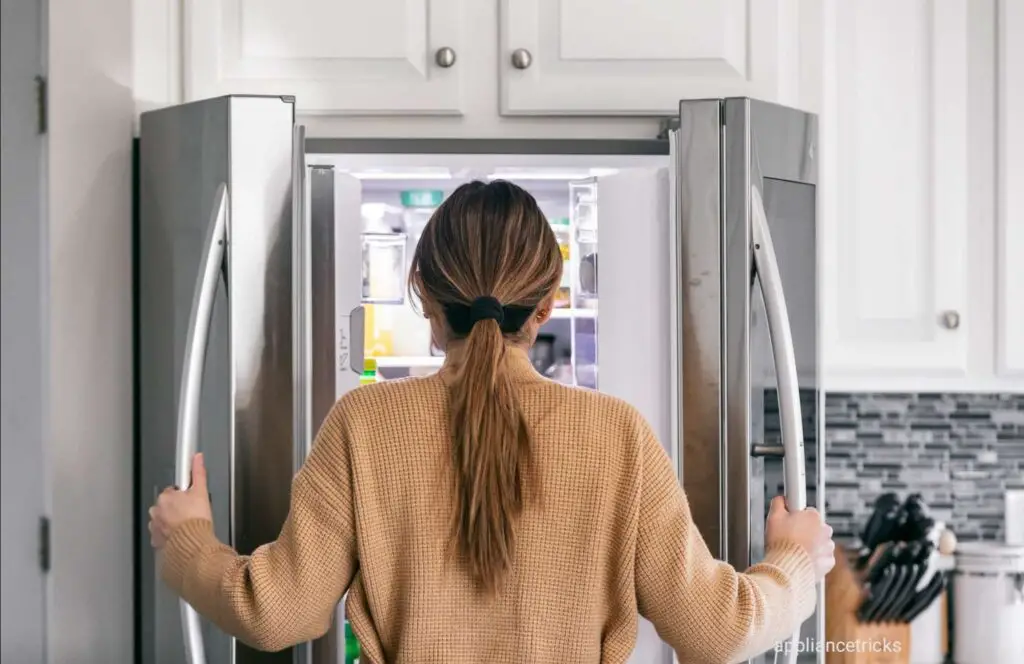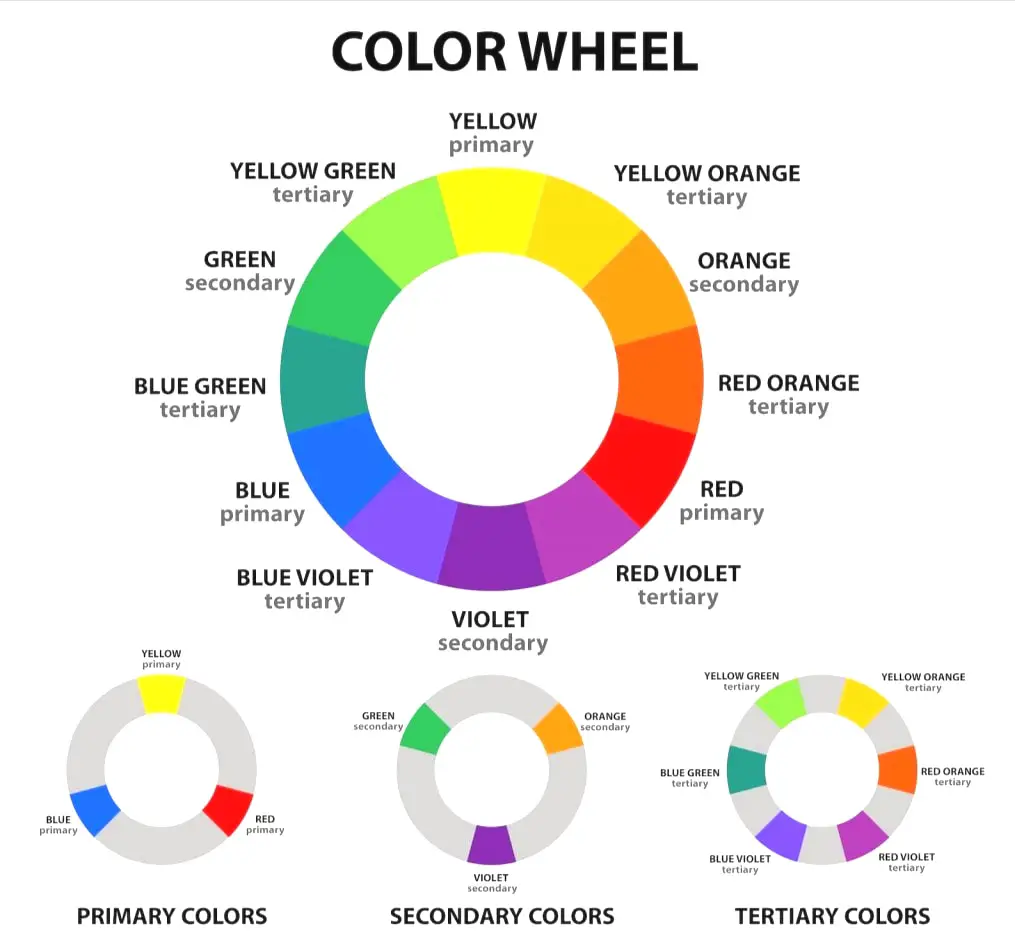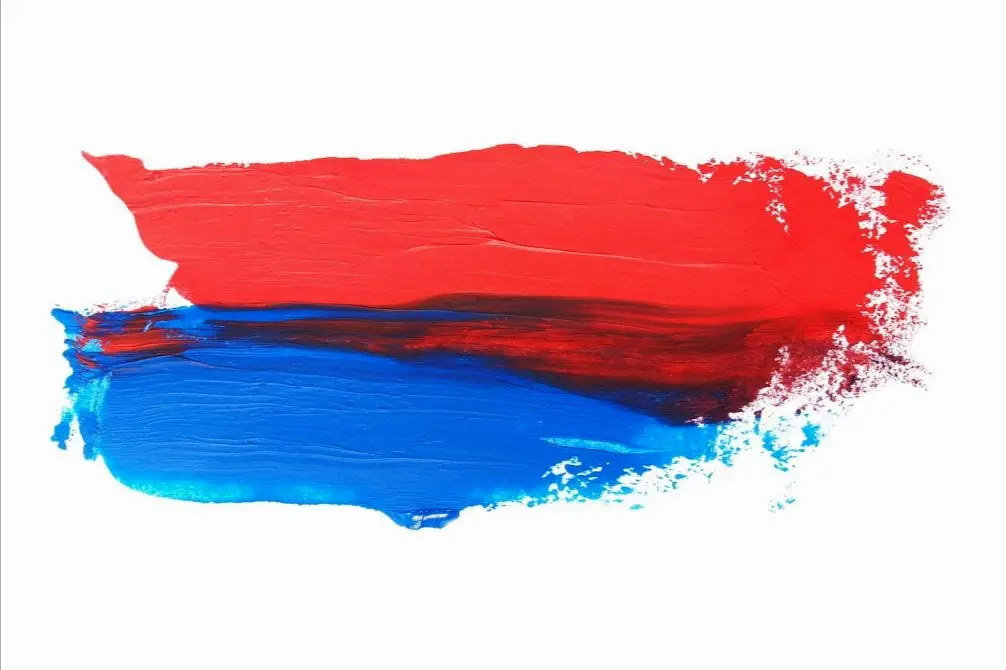What Colors Give Purple?Red and blue colors mixed together create purple. This combination can be adjusted for different purple shades.
The exploration of color mixing is a fascinating journey into the world of art and design. Purple, a popular hue known for its association with royalty and creativity, results from blending the primary colors red and blue. The proportions of each color can change the exact shade, ranging from deep violets to light lavenders.
This versatility makes purple a favorite among painters, interior designers, and fashion enthusiasts. An understanding of color theory can help in achieving the perfect purple tone for any project. Whether you’re an artist trying to get your palette just right, or a homeowner looking to decorate a room, the red and blue combination is your starting point for all things purple.
The Mystery Of Purple
The allure of purple wraps it in a blend of mystery and sophistication. This enchanting hue emanates from a fusion of calm blue and fiery red. Unlocking purple’s secrets offers a fascinating journey through nature and human history.
Origins In Nature: Finding Purple
Purple’s presence in nature is a rare and delightful spectacle. Unlike other more common colors, purple’s occurrence is scarce. From lavender fields to amethyst geodes, the moments when nature reveals purple are profoundly special. Here’s where you might stumble upon this elusive color:
- Floral Kingdom: Violets and orchids showcase vibrant purple hues.
- Mineral World: Amethyst, a type of quartz, offers deep purple shades.
- Animal Realm: Some species, like the Purple Emperor butterfly, flash purple accents.
Cultural Significance: The Color Of Royalty
Purple boasts a storied past, dripping with opulence and exclusivity. Historically, creating purple dye was an expensive and labor-intensive process. Reserved for the garments of emperors and kings, purple became a symbol of wealth and power. These factors contributed to its regal reputation:
| Factor | Contribution to Royalty |
|---|---|
| Scarcity of Dye | Made from rare sea snails, purple dye was hard to produce. |
| Symbolism | Evoked a sense of mystery and spirituality. |
| Legislation | Laws often reserved purple for royal use. |
In art and icons, leaders often appear arrayed in purple as a sign of their elevated status. Even today, purple is a preferred shade for conveying luxury and nobility.
Primary Color Foundations
Before we delve into creating purple, understanding primary colors is essential. These are the colors that, when mixed, produce a multitude of others. They’re the very backbone of color theory, and they lay the groundwork for almost every color we perceive, including purple.
Color Wheel Basics
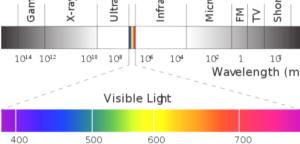 What Colors Give Purple
What Colors Give Purple
Color Wheel Basics
The color wheel serves as a simple visual representation of colors and their relationships. At its core, it displays three primary colors: red, blue, and yellow. These primary colors are spaced evenly around the wheel, standing at the center of color creation. They combine in various ways to form secondary and tertiary colors.
Primary Colors Role
Primary Colors Role
Primary colors play a pivotal role in color mixing. You cannot create these three colors by mixing others, which is why they are fundamental. To achieve purple, a color often associated with royalty and luxury, a specific combination of primary colors is required. You need to mix red and blue.
- Red brings warmth and intensity.
- Blue adds depth and calmness.
By carefully blending red and blue, you can achieve various hues of purple. From lavender to violet, each hue varies depending on the red-to-blue ratio.
| Red Amount | Blue Amount | Type of Purple |
|---|---|---|
| High | Low | Magenta |
| Equal | Equal | True Purple |
| Low | High | Indigo |
Unlocking Purple’s Secrets
Purple is a color of mystery and intrigue. Its vibrant hue captivates the eye, sparking curiosity about its origins. This section will peel back the layers of purple’s creation. Dive into the colorful world that leads to the birth of this royal shade.
Color Theory: A Brief Introduction
Color theory is a science and art unto itself. It explains how colors mix, match, and contrast with each other. To understand purple, we must first look at the basics. Color theory introduces us to the color wheel. This wheel shows the relationships between colors.
- Primary Colors: Standalone hues that create all other colors.
- Secondary Colors: Made by mixing two primary colors.
- Tertiary Colors: Results from combining a primary and a secondary color.
Primary Colors To Create Purple
The magic that gives us purple occurs when you blend two primary colors, specifically red and blue. These colors are at opposite ends of the color spectrum, and when mixed, they produce purple. The ratio of red to blue alters the final shade, from a light lavender to a deep violet.
| Red Amount | Blue Amount | Resulting Purple Shade |
|---|---|---|
| High | Low | Light Purple |
| Equal | Equal | Pure Purple |
| Low | High | Dark Purple |
Let’s conduct a fun experiment. Grab red and blue paints. Start with one part red and one part blue. Mix them thoroughly. Observe the stunning purple that appears before your eyes. Change the ratio and watch new purples emerge. This simple activity shows the power of color theory in action.
Now you know the secret behind creating the majestic purple. Whether for art, design, or simply to satisfy your curiosity, the journey through purple’s creation is as fascinating as the color itself.
Shades Of Purple
The world of color is a spectrum of beauty, and purple sits proudly with a charisma that is as mysterious as it is regal. This vibrant color family ranges from the softest hints of lavender to the deepest shades of violet. Let’s explore the delightful variety that purple presents, understanding each hue’s unique charm.
Variations In Hue: Lavender To Violet
Purple’s many shades get their character from light to dark and cool to warm undertones. The subtle variations in hue create a multitude of purples each with its own story. Take a journey from the faint whispers of lavender, embodying the freshness of early spring, through to the rich and bold presence of violet, that commands attention with its depth and intensity.
- Lavender: A gentle, floral hue with a touch of whimsy.
- Lilac: Slightly richer than lavender, with a hint of pink.
- Plum: A deep, luxurious color balanced between red and blue.
- Orchid: A vibrant, energetic purple with pink undertones.
- Amethyst: Striking and royal, reminiscent of the precious stone.
- Violet: A full-bodied purple, hovering on the border of blue.
Impact Of Proportions On Shade
Creating the perfect shade of purple is an art. It relies on the balance of blue and red —the color’s parents. Tiny changes in this balance can yield a dramatically different shade. Discover the magic of proportions with these comparisons:
| Red:Blue Ratio | Resulting Shade of Purple |
|---|---|
| 1:1 | True purple |
| 1:2 | Blue-purple |
| 2:1 | Red-purple |
| 1:3 | Deep violet |
| 3:1 | Magenta-purple |
To achieve your desired shade, adjust the red to blue ratio in your mixing palette. Experiment with these proportions to unveil a unique purple that’s all your own.
The Role Of Medium
The medium you choose greatly impacts the color purple’s creation. Whether mixing paints or pigments or inputting color codes in a digital space, understanding the medium’s role is crucial. Artists and designers apply specific techniques to create the perfect shade of purple.
Paints And Pigments: Mixing Techniques
Creating purple in traditional media such as paints or pigments involves blending two primary colors: blue and red. The appearing purple hue varies depending on the medium and the mixing technique used. Here are some tips and techniques:
- Equal Parts: Start with equal parts of red and blue and adjust as needed.
- Color Intensity: Use more red for a warmer purple, more blue for cooler shades.
- Medium’s Base: Consider whether the medium is oil, acrylic, or watercolor.
- Test Swatches: Always mix small amounts and test before final application.
Digital World: Rgb And Hex Codes
In the digital realm, purple shades are crafted through RGB (Red, Green, Blue) values and HEX codes. These codes dictate the precise color displayed on screens. Here’s how they apply to purple:
| Purple Shade | RGB Values | HEX Code |
|---|---|---|
| Light Purple | 191, 153, 204 | #BF99CC |
| Deep Purple | 102, 51, 153 | #663399 |
| Vibrant Purple | 153, 51, 204 | #9933CC |
Using CSS, you can also style elements with purple colors. For example:
Psychology And Impact
Color plays a powerful role in how we feel and act. Purple, a blend of red and blue, holds a unique place in this spectrum. It often represents mystery, royalty, and spirituality. Dive into the psychology and impact of purple to understand its influence in daily life and commerce.
Emotional Responses To Purple
The color purple can evoke a range of emotions. It’s an introspective hue, prompting deep thoughts or a sense of calm. Let’s explore the common emotional responses associated with purple:
- Calming: The blue in purple brings a peaceful feeling.
- Inspiring: As a color often linked to the imagination, purple can spark creativity.
- Luxurious: Historically tied to nobility, purple can symbolize wealth and extravagance.
- Spiritual: Many see purple as a color that represents a connection to the universe or higher powers.
Marketing And Branding Uses
Brands use colors to communicate values and attract customers. Purple can be a strategic choice for various industries. Here’s how businesses use purple:
| Industry | Reason for Choosing Purple |
|---|---|
| Tech | Suggests innovation and creativity |
| Beauty | Conveys luxury and quality |
| Health | Associates with wisdom and problem-solving |
| Education | Represents wisdom and respect |
On packaging and websites, purple stands out from common reds and blues. It can make a brand memorable. Companies leverage purple for its sophisticated and modern appeal.
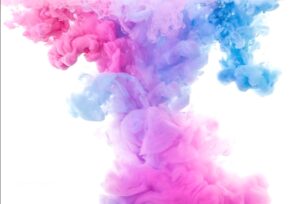 What Colors Give Purple
What Colors Give PurpleArtistic Expressions
When artists mix red and blue, they create the color purple. Purple echoes with depth and creativity, forming breathtaking sights in art and design. Time-honored and modern creatives choose purple to express the mystical and royal qualities of their pieces. Let’s journey through the impactful use of purple in the world of art and design.
Famous Artworks Featuring Purple
- “The Starry Night” by Vincent van Gogh with its dynamic swirls has a touch of purple portraying the night sky.
- Henri Matisse’s “Purple Robe and Anemones” showcases a striking use of purple for feelings of luxury.
- In Marc Chagall’s “The Violinist”, purple highlights the emotional intensity of music.
Contemporary Use In Design
Today, designers embrace purple to add vibrancy to their work.
- Fashion designers infuse purple for a splash of sophistication in their clothing lines.
- Web designers use purple to craft user interfaces that stand out and engage.
- Interior designers rely on purple to bring in a sense of serenity and opulence to spaces.
Purple’s dynamic range from soft lavenders to deep violets allows for versatile expression in design.
Beyond The Canvas
Color is a language that speaks beyond the limits of a painter’s canvas. It’s a form of expression that touches every aspect of our lives. The color purple, a blend of bold red and calm blue, creates a hue rich in complexity and imbued with a sense of creativity and luxury. As we explore the influence of purple, we’ll see how it extends its reach from the realm of art into the fabric of our daily experiences.
Fashion And Interiors: Incorporating Purple
Purple has always been a symbol of royalty and sophistication. Its presence in fashion and interior design denotes elegance and a unique character. In the world of dressmaking, purple adapts to various fabrics, complementing both deep winter wardrobes and breezy summer styles. In home decor, this versatile shade adds a touch of warmth and depth.
- Wardrobe Accents: A purple scarf or tie can transform an outfit.
- Purple Furniture: A single piece can become a room’s focal point.
- Wall Colors: Shades of purple often create cozy, inviting spaces.
Incorporating purple within interiors often starts with small accents. Cushions, vases, or curtains in various purple tones can add a layer of richness to any space. In fashion, whether through a sleek amethyst dress for an evening out or a pair of lavender sunglasses for a day in the sun, purple makes a statement.
Future Trends: What’s Next For Purple?
Purple’s popularity is set to increase in the coming years. It is already making waves in tech products, graphic designs, and even hair color trends. Forward-looking industries predict more earth-friendly shades of purple, reflecting global themes of sustainability and nature.
| Trend | Description |
|---|---|
| Eco-Purple: | Nature-inspired purple tones are on the rise. |
| Digital Purple: | Vibrant purples in apps and websites catch the eye. |
| Purple Branding: | Companies use purple to stand out and convey innovation. |
Expect to see softer, more muted purples gaining popularity in sustainable product packaging and eco-fashion. As society aligns with environmental values, shades like lilac and lavender will likely become symbols of this movement. Simultaneously, the tech world may favor punchier purples, emphasizing modernity and creativity.
Frequently Asked Questions Of What Colors Give Purple
What Primary Colors Make Purple?
The combination of the primary colors red and blue in equal parts creates purple. Adjust the ratio of red to blue to vary the shade of purple.
What Colors Give Purple?
Purple is made by mixing a cool color, blue, with a warm color, red. It is generally considered a cool color due to its association with blue.
What Are The Traditional Cinco De Mayo Colors?
The traditional Cinco de Mayo colors are red, green, and white. These colors symbolize Mexico’s rich culture and heritage. Red represents the blood shed during the battle of Puebla, green represents hope and independence, and white represents purity and peace.
What Two Paint Colors Create Purple?
To create purple in paint, mix equal amounts of red and blue paint together. The hue can be adjusted by changing the amount of each color.
Conclusion
What Colors Give Purple.Exploring the creation of purple has been a colorful journey. We’ve seen that combining red and blue hues, in the right balance, creates this regal shade. Whether you’re painting or designing, remember these color fundamentals to craft the perfect purple.
Let’s infuse life with more of this vibrant color.
#What Colors Give Purple #What Colors Give Purple #What Colors Give Purple #What Colors Give Purple #What Colors Give Purple #What Colors Give Purple #What Colors Give Purple #What Colors Give Purple #What Colors Give Purple #What Colors Give Purple #What Colors Give Purple #What Colors Give Purple #What Colors Give Purple #What Colors Give Purple #What Colors Give Purple #What Colors Give Purple #What Colors Give Purple #What Colors Give Purple
